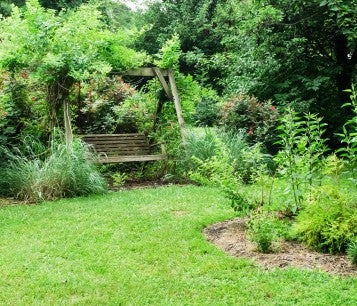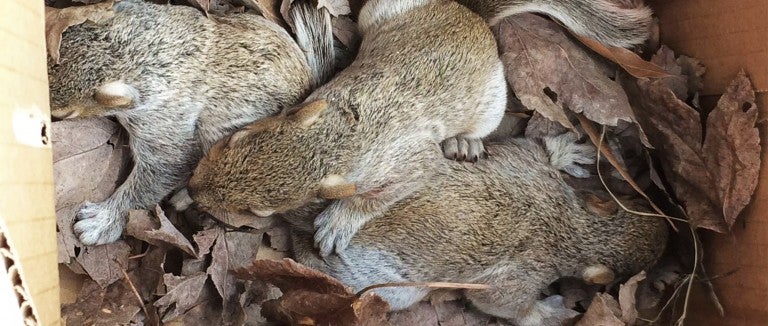To most people, the tiny voices rising above the din of traffic would have registered as everyday birdsong. But to Lori Thiele’s finely tuned ears, the high-pitched staccato emanating from a neighbor’s yard last spring was unmistakable, a sure sign of distress.
“I was getting ready to go out on a job,” says the longtime rescuer and wildlife biologist. “I walked out my back door and immediately heard the babies.”
She also heard chainsaws. Crossing the street to investigate, she found young squirrels who’d been placed inside a cat carrier by workers removing a tree. Knowing their mother was likely frantic to retrieve them, Thiele relocated the babies to a cardboard pet carrier with holes cut in the side for easier access. When the mom failed to reappear, Thiele waited for the noise to stop and got even more creative, playing pre-recorded baby squirrel vocalizations from her phone.
“I couldn’t even get out of the way fast enough before the mom started grabbing them—boom, boom, boom,” she says. “She came down looking for them so quickly that I just started putting them out on the sidewalk, and she had them all three tucked back in the next tree over in like 30, 45 seconds.”
Given the chance, wild parents often carry displaced babies to alternate nests. But countless animals never have that opportunity. Though it’s best to prune and remove trees after they’ve gone dormant, many babies end up orphaned because of poorly timed tree maintenance at the height of breeding season. Entire nests are inadvertently—or sometimes intentionally—thrown into wood chippers. Some are so camouflaged that losses are impossible to quantify: Hummingbirds create lichen-covered nests that blend into foliage and bark, hooded orioles raise young under palm fronds, and woodpecker families reside in dead limbs on live trees.
A humane backyard is a natural habitat offering wildlife plenty of food, water and cover, plus a safe place to live free from pesticides, chemicals, free-roaming pets, inhumane practices and other threats. And it's so easy to build!

Simple observation can prevent harm, says Gillian Martin, founder of the California-based Cavity Conservation Initiative, dedicated to preserving dead wood for habitat and encouraging mindful maintenance of live trees. The presence of active parents, combined with the sounds of their young, can alert tree trimmers to a growing family in their midst.
Timing is also key. As an arborist and animal rescue volunteer, Mike Fried of Comprehensive Tree Care in Frederick, Maryland, doesn’t hesitate to postpone certain tasks in his clients’ yards if he finds a nest. Recently, he only partially pruned a dogwood after discovering catbird families, being careful to avoid the nests and the shade that protected them.
Pruning or removing trees in summer can harm more than just animals, often scalding surrounding plants that are unaccustomed to direct sunlight. “The majority of trees are best pruned in the dead of winter when they’ve gone dormant and don’t have any leaves,” says Fried.
The majority of trees are best pruned ... when they’ve gone dormant and don’t have any leaves.
Mike Fried, Arborist
Even if branches must be pruned sooner for pedestrian or structural safety, sometimes carefully reducing their lengths can keep nests intact. “The more you leave in place,” says Martin, “the better.” On a recent job, Fried left enough tree trunk for a resident mouse to continue his occupancy. “Typically dead wood is removed for aesthetic reasons,” he says. But provided it’s safe, “it’s still a good source for habitat … and there’s no reason not to leave those things up.”
Want more content like this?
This was written and produced by the team behind All Animals, our award-winning magazine. Each issue is packed with inspiring stories about how we are changing the world for animals together.
Learn MoreSubscribe
